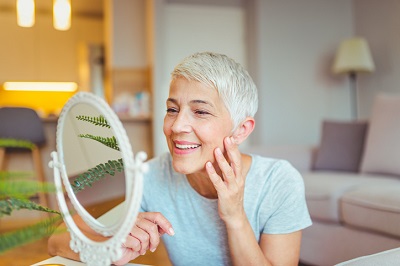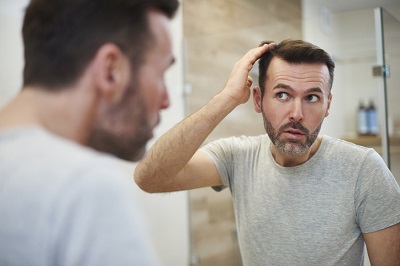Growth hormone deficiency (GHD) is a condition characterized by low levels of human growth hormone (HGH). If you are experiencing the negative health effects of GHD, hormone replacement therapy (HRT) with somatropin — a synthetic version of HGH used in therapy — has the potential to positively transform your life physically, mentally, and emotionally.
In this article, we will break down both the immediate and long-term changes after HGH replacement therapy, how therapy improves physical and mental health in the patients who receive it, and the distinctive transformations for men and women, respectively.
Who Should Receive HGH Therapy?
HGH levels can decline due to injury, illness, or aging. For individuals with sub-optimal HGH levels, supplementation with exogenous HGH will boost the amount of HGH available in the blood. This promotes healthy tissue growth, improved mental health, and greater energy. Here is a complete guide to the benefits of HGH for patients with deficiencies.
A Timeline of HGH Transformations
Some of the results of HRT with somatropin become noticeable in as little as two weeks following the start of therapy. Other benefits, especially the more subtle ones, become apparent later on. Below is a timeline of wins that the patients who receive HGH replacement therapy typically experience.
Transformations 1 Year After HGH Therapy
 After one year of HRT, you can expect to see the following changes:
After one year of HRT, you can expect to see the following changes:
- Reduction in visceral fat (the dreaded “belly fat”). Due to the complex beneficial role that HGH plays in regulating metabolism, bodies without enough HGH develop a buildup of belly fat. On average, HGH therapy results in a 10-14% drop of belly fat within 6 months of therapy.
- Greater lean muscle mass. One of the most sought-after transformations after HGH therapy, especially for men, is the increase in muscle strength and size. As an anabolic hormone, HGH catalyzes muscle development – maximizing the effectiveness of your time in the gym.
- Stronger bones. Fortifying bones, in addition to spurring tissue growth, is one of the main activities of HGH in the body. After a year of therapy, patients have denser, sturdier bones that are less prone to injury. This benefit is especially important for aging women, who are most prone to bone fractures.
- Improved cholesterol levels.
- Optimized skin appearance and texture. Greater collagen and elastin production results in younger-looking, more supple skin with a noticeable reduction in wrinkles. Women especially enjoy the skin-rejuvenating effects of HGH therapy.
- Reduction in joint pain. HGH plays a critical role in maintaining joint health and preventing chronic pain. Without enough HGH, the human body is more susceptible to joint damage. HGH protects joint integrity and function by boosting collagen levels and facilitating weight loss.
The human body’s 250-350 joints are critical components of the body’s structure and function. Accordingly, poor joint health is disastrous for the quality of life. In fact, chronic joint pain is a leading cause of disability in the United States. - Improve the ability to concentrate. As we will explore further on, HGH carries substantial effects for mental and emotional health in addition to its physical pros. At the one-year mark, therapy patients consistently report improved capacities to maintain long-term concentration.
- Reductions in symptoms of depression and/or anxiety. Low HGH levels can worsen or even cause depression and anxiety, two of the most common mental health conditions in the United States. Patients who receive HRT with growth hormone consistently report improved mood and have lower rates of clinical depression and anxiety.
Transformations 3 Years After HGH Therapy
Many of the long-term benefits of HRT with HGH begin within a few months of therapy and continue to increase in intensity, even three years into treatment. Here are the highlights:
- Enhanced cardiac capacity for exercise. Patients report greater stamina and less exhaustion following intense exertion – often encouraging greater physical activity levels that, in turn, further enhance hormone health over time.
- An improved “lust for life.” Activities that were once enjoyable but had become boring or taxing are once again engaging and exciting.
Although this “zest” for life is one of the most challenging changes of HGH therapy to express verbally, patients consistently report a renewed vigor and enthusiasm for life that they previously thought had vanished forever. - Improved eyesight.
- Reduced blood pressure. Supplementation with HGH is shown to reduce both diastolic and systolic blood pressure in individuals with deficiencies, which can prevent or slow the development of a number of chronic health conditions.
- Physical appearance is 10-20+ years younger.
- Lower systemic inflammation.
Transformations 5 Years After HGH Therapy
Here are the anti-aging and disease-fighting victories of HGH therapy that stay with patients long down the road.
- Reduced risk of osteoporosis.
- Reduced risk of neurodegenerative diseases such as Alzheimer’s or Parkinson’s.
- Immune system fortification.
- Quicker cellular regeneration (important for having a healthy supply of fresh, young cells).
- Reduced risk of cardiovascular disease.
- Boosted sexual performance and libido.
- Improved blood-sugar management. Diabetes, which is caused by improper management of blood sugar levels via insulin, is one of the most common causes of chronic illness in the United States. The risk of diabetes increases significantly over time, with older Americans being at greatest risk.

Physical Transformations for HGH Therapy Patients
The physical changes for men and women receiving HGH therapy include:
- Greater strength.
- Improved body composition (fat distribution).
- Enhanced sexual function and libido.
- More youthful look (improved skin texture and appearance).
- Improved posture.
- Glossier hair.
Mental/Emotional Transformations for HGH Therapy Patients
HGH therapy significantly benefits patients in terms of mental and emotional health in the following ways:
- Lifted depression and anxiety.
- Improved concentration ability.
- Optimized cognitive (critical thinking) function.
- Reduced risk of neurodegenerative disease.
- More optimistic outlook.
- Greater enthusiasm for life.

Anti-Aging and Weight Loss Changes of HGH Therapy: What the Patients Say
The patients with HGH deficiencies who receive therapy – both men and women – look and feel younger, slimmer, more energetic, and more excited about life than they have in years.
Alexia, a 47-year-old woman who recovered her health with HGH therapy, says:
“Since starting HGH therapy, I sleep better at night, have more energy and focus during the day, have lost 15 pounds, and my joint pains are almost entirely gone. I wake up each day feeling happy and excited again.”
Alex. A 38-year-old male HRT patient, says:
“I knew that 38 was very young to be suffering from the growth hormone deficiency, yet I had so many of the signs, including weight gain, low libido, fatigue, and depression… since I started HGH therapy, I am already sleeping better at night, and I have more energy during the day. Even my feelings of depression are coming less often, and I am looking forward to further benefits over the next few months.”
How to Maintain Optimal HGH Levels Throughout Life
The chart below shows optimal HGH levels for adult men and women, respectively. This is the amount of HGH that the human body requires to function at its best.
| Normal HGH Levels in Adults | |
| Men | 0.4-10 ng/mL* |
| Women | 1-14 ng/mL |
*ng/mL = nanograms per milliliter
Unfortunately, a large percentage of the US population does not meet these levels. If you have not been tested recently and are over 30, in fact, chances are good that you may be one of them.
The chart below shows the typical decline of HGH and its all-important partner hormone, insulin-like growth factor 1, in women across the lifespan. Similar downward trends are seen in male subjects.
Pending further advances in the industry, the reality is that aging men and women looking to reap the long-term benefits of optimal HGH levels must periodically receive somatropin through therapy. In addition, the lifestyle interventions below can help sustain the long-term benefits of HGH therapy.
How to Extend and Maximize Postive Effects of HGH Therapy
To fully reap the potential long-term benefits of HGH therapy, patients should also make the following lifestyle changes to support their long-term hormone health:
- Consume a whole-foods based diet while eliminating processed foods such as crackers, chips, or sodas. Increase the intake of essential amino acids, the building blocks of HGH.
- Get a minimum of 7 hours of restful, uninterrupted sleep each night. HGH is released in the highest concentrations during this time.
- Practice regular exercise (especially resistance training/weightlifting).
- Strategically manage stress (via mediation, breathing exercises, or yoga).



